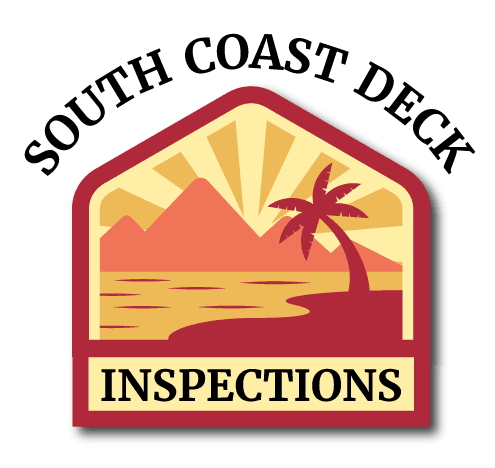Why are SB 326 inspections crucial?
SB 326 inspections are crucial because they help identify potential safety hazards in exterior elevated elements such as balconies, which are essential for the well-being of residents. By conducting these inspections, homeowners’ associations HOAs can proactively address any structural issues, ensuring the safety of residents and minimizing the risk of accidents or injuries. Compliance with SB 326 not only fulfills legal obligations but also preserves the integrity of the property and fosters trust among residents in the HOA’s commitment to safety.
Compliance Deadlines and Timelines for SB 326
The compliance deadlines and timelines for SB 326, also known as the “Balcony Bill,” depend on the age of the building. For buildings constructed before January 1, 2020, HOAs must complete their first inspection by January 1, 2026. For buildings constructed on or after January 1, 2020, the first inspection must be completed within six years of the date of completion of the original construction or remodel. Additionally, HOAs must conduct subsequent inspections at least once every six years thereafter.
Regular Inspection Regime
SB 326 establishes a regular inspection regime for homeowners associations HOAs regarding exterior elevated elements, such as balconies, within common interest developments. The law requires HOAs to conduct visual inspections of these elements at least once every nine years. This regular inspection regime ensures ongoing assessment and maintenance of exterior elevated elements, promoting safety and compliance within HOA-managed properties.
Addressing Repair Needs arising from SB 326
Addressing repair needs arising from SB 326 involves several steps. Firstly, HOAs must ensure that any deficiencies identified during the required inspections are promptly addressed to maintain safety and compliance. This may involve engaging qualified contractors or professionals to carry out necessary repairs or modifications to exterior elevated elements such as balconies. Additionally, HOAs should establish clear protocols for documenting repairs and verifying compliance with SB 326 requirements to mitigate potential liabilities and uphold property integrity. Regular communication with residents regarding repair timelines and progress is also crucial for maintaining transparency and fostering community trust throughout the repair process.
Legal Implications and Penalties
There are legal implications and penalties associated with non-compliance with SB 326. Homeowners’ associations HOAs failing to conduct required inspections or address identified repair needs can face legal consequences, including potential lawsuits from residents or regulatory action from local authorities. Additionally, failure to comply with SB 326’s requirements may result in fines or penalties imposed by relevant regulatory agencies. Ensuring timely compliance with SB 326 is essential for HOAs to mitigate legal risks and maintain the safety and integrity of their properties.
Financial Considerations of SB 326
Financial considerations associated with SB 326 primarily revolve around the costs incurred for conducting inspections and addressing repair needs. Homeowners’ associations (HOAs) must budget for the expenses related to hiring licensed professionals to perform inspections and potentially hiring contractors for repairs or modifications to exterior elevated elements. These costs can vary depending on the size and complexity of the property, as well as the extent of any necessary repairs. HOAs may also need to consider allocating funds for ongoing maintenance to ensure compliance with SB 326 requirements over time. Proper financial planning and budgeting are essential for HOAs to effectively manage the financial impact of SB 326 while maintaining property safety and compliance.
The Role of Inspection Services
The role of inspection services regarding SB 326 is crucial for ensuring compliance and maintaining safety within homeowners’ associations HOAs. Inspection services play a pivotal role in conducting thorough assessments of exterior elevated elements, such as balconies, in accordance with SB 326’s requirements. By conducting inspections and providing detailed reports, inspection services help HOAs prioritize repair needs, mitigate liability risks, and uphold compliance with SB 326 regulations, ultimately promoting the safety and well-being of residents within common interest developments.
Impact on Tenants and Communities
The impact of SB 326 on tenants and communities is significant as it prioritizes their safety and well-being within common interest developments. By requiring inspections and maintenance of exterior elevated elements like balconies, SB 326 aims to mitigate safety risks and potential accidents, thus enhancing the overall quality of living for tenants. Additionally, compliance with SB 326 fosters a sense of trust and confidence within communities, as residents can feel assured that necessary safety measures are being taken by their homeowners’ associations (HOAs) to uphold property integrity and ensure their protection. Overall, SB 326 positively influences tenants and communities by promoting safety, transparency, and accountability within HOA-managed properties.
In Conclusion
In conclusion, Senate Bill No. 326 represents a significant shift in the regulatory landscape for homeowners’ associations HOAs in California, particularly concerning the safety and maintenance of exterior elevated elements like balconies. Compliance with SB 326 is essential for HOAs to uphold safety standards, mitigate legal risks, and preserve property integrity. While there are financial considerations and legal implications associated with SB 326, the overall impact on tenants and communities is positive, as it prioritizes safety, transparency, and accountability within HOA-managed properties. Through proactive inspection and maintenance efforts, SB 326 contributes to fostering safer and more resilient communities across California.
